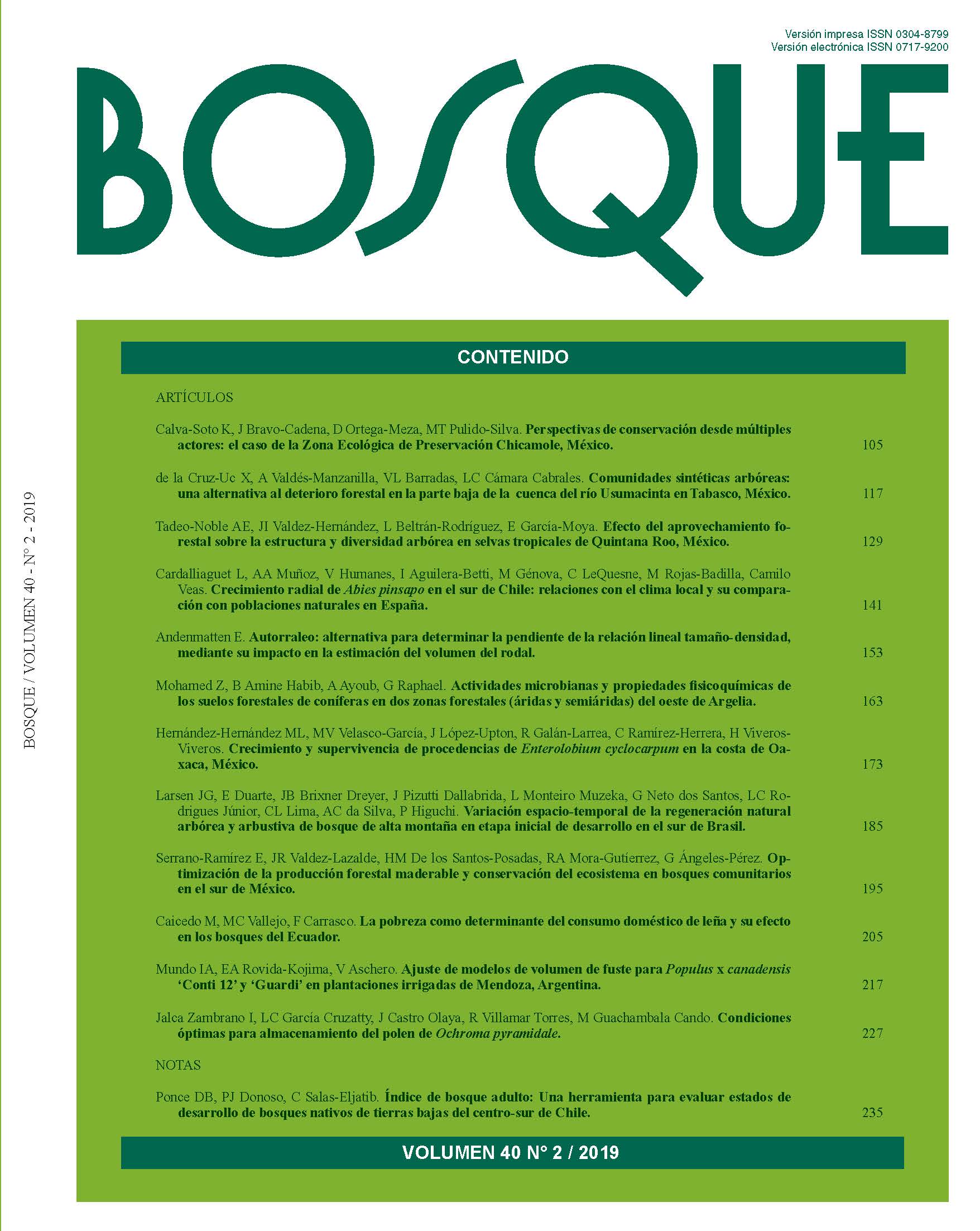Optimization of timber production and ecosystem conservation in community forests of southern Mexico
Main Article Content
Abstract
Current forest management approaches require management strategies that identify where and when to carry out harvest activities that satisfy the demand for wood products while forest ecosystem services are conserved. This work makes the TRIAD zoning approach operational through a mathematical model to optimize the forestry planning process. This approach proposes dividing the forest under management into an intensive harvesting area, an extensive harvesting area, and a conservation area, according to the production objectives established. A mixed integer nonlinear optimization model was formulated to maximize the present value of gains derived from timber production, while satisficing operative and biodiversity conservation restrictions associated with the forest community of San Pedro El Alto, Oaxaca, Mexico. The model was solved through a genetic algorithm, in their simple version (GNS), and two variants of it (GN2 and GN3). The process allowed completing three objectives: 1) to propose and validate a model capable of generating comparable solutions to the current management scenario in the community, 2) to compare three different solution algorithms, and 3) to offer an efficient algorithm to solve similar optimization problems.

